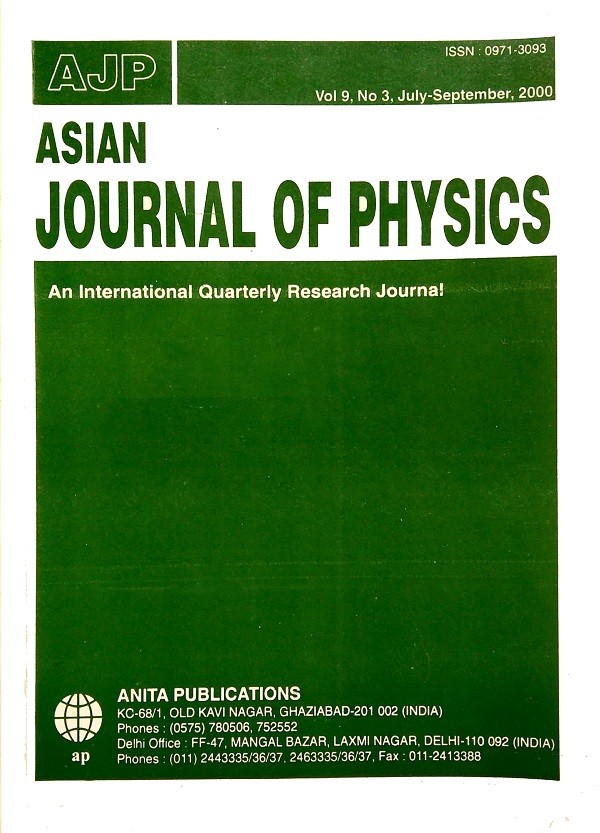Editor-in-Chief : V.K. Rastogi

ASIAN JOURNAL OF PHYSICS
An International Peer Reviewed Research Journal
Frequency : Monthly,
ISSN : 0971 – 3093
Editor-In-Chief (Hon.) :
Dr. V.K. Rastogi
e-mail:[email protected]
[email protected]
| AJP | ISSN : 0971 – 3093 Vol 9, No. 3, July-September, 2000 |
Asian
Journal of Physics
Vol 9, No. 3, July-September, 2000
Anita Publications
FF-43, 1st Floor, Mangal Bazar, Laxmi Nagar, Delhi-110 092, India
Vol. 9, No 3 (2000) 709-721
The Maximum in Glass Transition Temperature (Tg) near x = 1/3 in GexSe1-x Glasses
PP BOOLCHAND
Department of Electrical, Computer Engineering and Computer Science,
University of Cincinnati, Cincinnati, OH 45221-0030, USA
We review results of Raman scattering, Mössbauer spectroscopy and T-modulated Differential Scanning Calorimetry experiments on GexSe1-x glasses. The molecular origin of the maximum in Tg near x=1/3 or mean coordination r- =2(1+x)=2.67. suggested by these experiments, implies that a nanoscale phase separation of the glass network takes place into Se-rich (A) and Ge-rich (B) molecular clusters. Phase separation on a molecular scale initiates at x > 0.31, and the B phase becomes the dominant one for x >0.35. In particular, in contrast to α – and β – crystalline GeSe2, stoichiometric GeSe2 glass is neither chemically ordered nor a continuous network. In ternary GexAsySe1-x-y, glasses at x=y, such nanoscale phase separation is apparently suppressed by chemical alloying As for r- up to 3.0. and Tgs are found to increase continuously with r-
